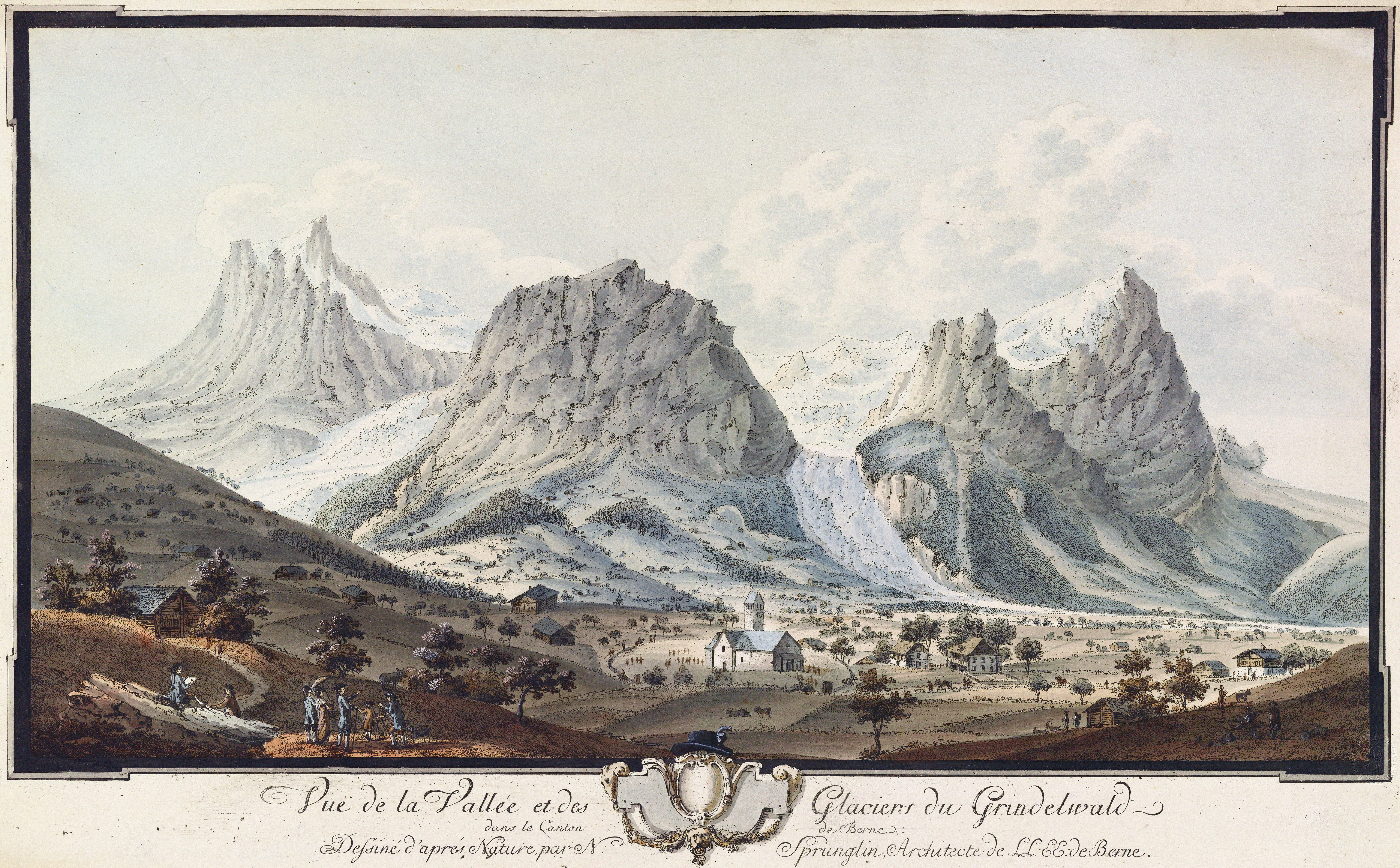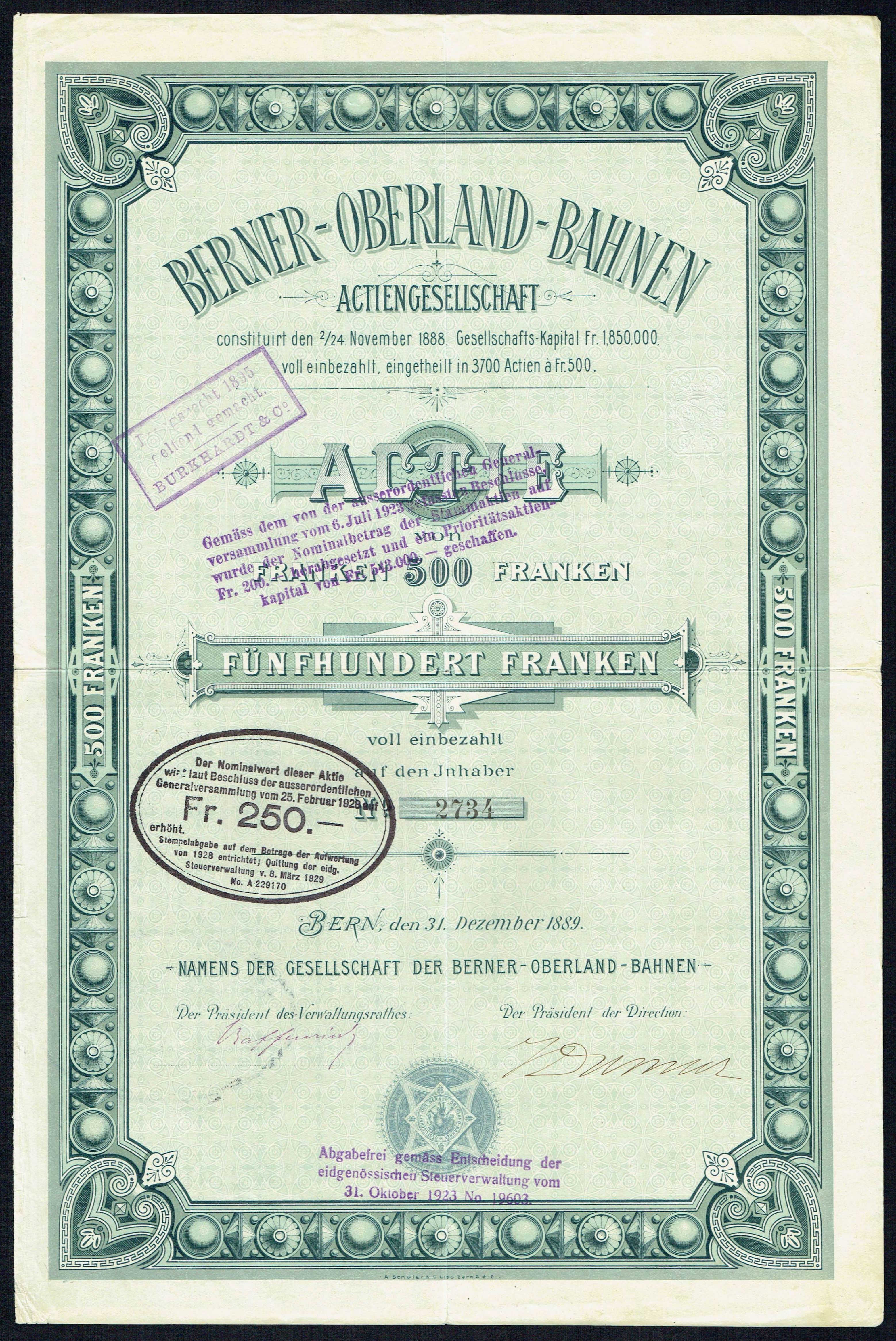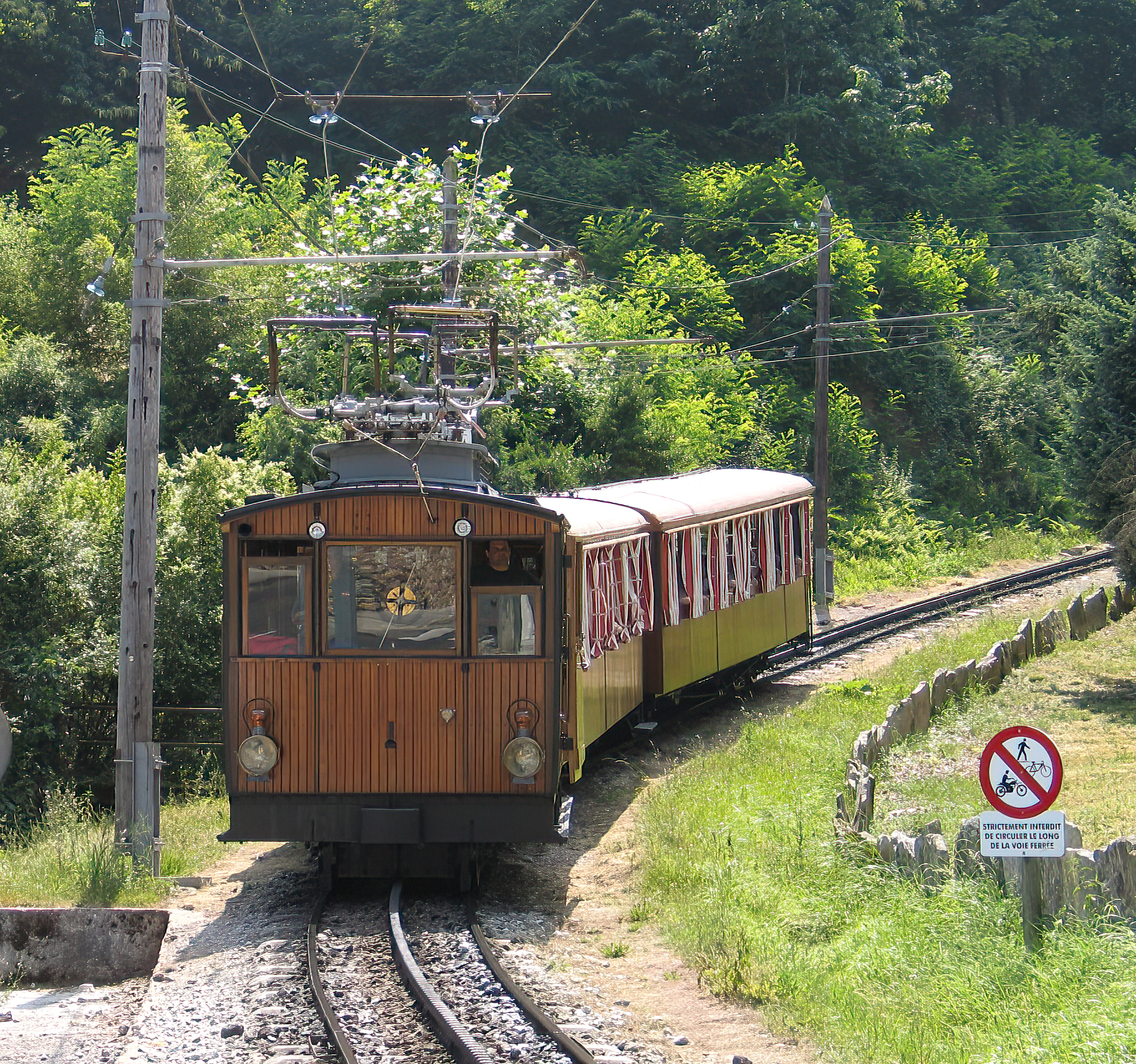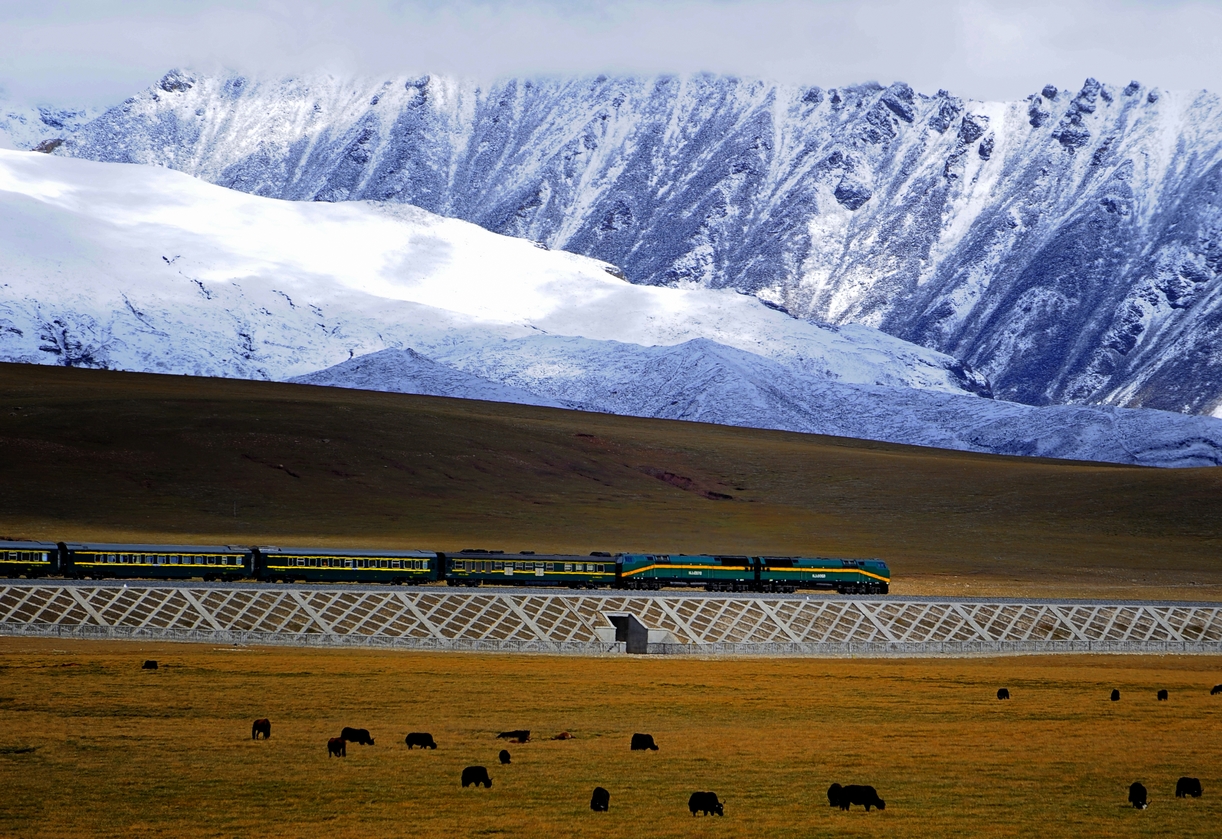|
Jungfraubahn
The Jungfrau Railway (german: Jungfraubahn, JB) is a mountain railway in the Bernese Alps, connecting Kleine Scheidegg in the Bernese Oberland to the Jungfraujoch, across the Valais border. The railway, which uses a and racks, runs from the station of Kleine Scheidegg () to the Jungfraujoch (). It is the highest railway in Switzerland and Europe, the Jungfraujoch being the highest railway station on the continent and well above the perennial snow line. As a consequence, the railway runs essentially within the Jungfrau Tunnel, built into the neighbouring Eiger and Mönch, to protect the line from snow and extreme weather. Another particularity of the Jungfrau Railway is the high elevation of its starting point, at the hub of Kleine Scheidegg, also the highest in Europe. The Jungfrau Railway got its name from the highest of the three high peaks above it: the Jungfrau ( en, maiden, virgin; ), the latter mountain being the initial goal of the project. A lift connecting the summit ... [...More Info...] [...Related Items...] OR: [Wikipedia] [Google] [Baidu] |
Grindelwald
Grindelwald is a village and Municipalities of Switzerland, municipality in the Interlaken-Oberhasli (administrative district), Interlaken-Oberhasli administrative district in the Cantons of Switzerland, canton of Bern (canton), Berne. In addition to the village of Grindelwald, the municipality also includes the settlements of Alpiglen, Burglauenen, Grund, Itramen, Mühlebach, Schwendi, Tschingelberg and Wargistal. Grindelwald village is located at AMSL, above sea level. Mentioned for the first time in 1146, it has become a major tourist destination of both Switzerland and the Alps since the golden age of alpinism in the 19th century. It is notably overlooked by the section of the Bernese Alps from the Wetterhorn to the Eiger, making up a huge natural barrier. Together with the adjacent valley of Lauterbrunnen, the valley of Grindelwald forms part of the Jungfrau Region of the Bernese Oberland, between Interlaken and the main crest of the Bernese Alps. Similarly to Lauterbrunnen, ... [...More Info...] [...Related Items...] OR: [Wikipedia] [Google] [Baidu] |
Wengernalpbahn
The Wengernalp Railway (german: Wengernalpbahn, WAB) is a long rack railway line in Switzerland. It runs from Lauterbrunnen to Grindelwald via Wengen and Kleine Scheidegg, making it the world's longest continuous rack and pinion railway. The name refers to the alpine meadow of Wengernalp, above Wengen. The line is normally operated in two sections, with trains from either direction terminating at Kleine Scheidegg. At the latter station, most passengers transfer to the Jungfrau Railway for the continuation of the journey to the highest railway station in Europe at Jungfraujoch. There are generally no roads to Wengen/Mürren, and the train is the main access. The line is owned by the ''Wengernalpbahn AG'', a subsidiary of the ''Jungfraubahn Holding AG'', a holding company that also owns the Jungfraubahn and Bergbahn Lauterbrunnen–Mürren, Harderbahn, and Firstbahn. Through that holding company it is part of the ''Allianz - Jungfrau Top of Europe'' marketing alliance, which ... [...More Info...] [...Related Items...] OR: [Wikipedia] [Google] [Baidu] |
Eismeer Railway Station
Eismeer railway station (German for ''Ice Sea'') is an underground railway station bored into the mountain Eiger on the Jungfrau Railway, which runs to the Jungfraujoch from Kleine Scheidegg. It lies at an altitude of 3,159 metres above sea level, which makes it the second highest railway station in Europe. Located just behind the south-east face of the Eiger, the station's principal purpose is to allow passengers to observe the view of the glacier Ischmeer (lit.: ''Ice Sea'', formerly called Grindelwald-Fiescher Glacier). To that end, uphill trains stop at the station for five minutes. The station opened on 25 July 1905, with the extension of the Jungfraubahn from its previous terminus at Eigerwand station. The building of the line this far had depleted the railway company's finances, and for the next seven years, Eismeer was to remain the upper terminus. After further fund-raising and an extended construction period, the line was extended to Jungfraujoch station in 1912 a ... [...More Info...] [...Related Items...] OR: [Wikipedia] [Google] [Baidu] |
Eigergletscher Railway Station
Eigergletscher is a railway station in the municipality of Lauterbrunnen in the canton of Bern. The station is served by trains of the Jungfrau railway, which run to the Jungfraujoch from Kleine Scheidegg, where they connect with services from Interlaken, Lauterbrunnen, Wengen and Grindelwald via the Bernese Oberland railway and the Wengernalp railway. The station takes its name from the adjacent Eiger Glacier, and is the Jungfraubahn's last station in the open air, before the line enters its tunnel to the summit. It is also the location of the railway's workshop. History The station opened on 19 September 1898, with the opening of the first open air stretch of the Jungfraubahn. After further construction, the line was extended to a temporary terminus within the tunnel at Rotstock station on 2 August 1899. Jungfraubahn AG announced that a new V-cableway would be constructed to bring visitors direct to Eigergletscher from Grindelwald, shortening journey times to the Jungfraujoch ... [...More Info...] [...Related Items...] OR: [Wikipedia] [Google] [Baidu] |
Eigerwand Railway Station
Eigerwand is a currently disused underground railway station on the Jungfrau railway, which runs to the Jungfraujoch from Kleine Scheidegg. The station is situated just behind the north wall of the Eiger, and its principal purpose was to allow passengers to observe the view through a series of windows carved into the rock face. Trains to Jungfraujoch used to stop at the station for five minutes. However, since late 2016, after the introduction of new, faster, rolling stock, the Jungfraubahn no longer stops here. Indeed, much of the 2017 publicity material fails to acknowledge that this viewpoint station ever existed. The station opened on 28 June 1903, with the extension of the Jungfraubahn from its previous temporary terminus at Rotstock station. After further construction, the line was extended to Eismeer station on 25 July 1905, and Eigerwand became an intermediate stop. Administratively, the station is in the municipality of Grindelwald in the canton of Bern. However, the ... [...More Info...] [...Related Items...] OR: [Wikipedia] [Google] [Baidu] |
Berner Oberland-Bahn
The Bernese Oberland Railway (german: Berner Oberland-Bahn, BOB) is a narrow-gauge mountain railway in the Bernese Oberland region of Switzerland. It runs, via a "Y" junction at Zweilütschinen to serve Lauterbrunnen and Grindelwald from Interlaken. The railway is rack assisted (that is although an adhesion railway, rack and pinion operation is used on steep sections of the line to assist traction). The BOB is owned by the ''Berner Oberland-Bahnen AG'', a company that also owns the Schynige Platte Railway. Through that company it is part of the ''Allianz - Jungfrau Top of Europe'' marketing alliance, which also includes the separately owned Wengernalpbahn, Jungfraubahn, Bergbahn Lauterbrunnen–Mürren, Harderbahn, and Firstbahn. History Planning The first proposals for the Berner Oberland-Bahn, made in 1873, showed a line from Interlaken (at that time Aarmühle) to Zweilütschinen with later options to Lauterbrunnen and Grindlewald with starting point at Bönigen. Four year ... [...More Info...] [...Related Items...] OR: [Wikipedia] [Google] [Baidu] |
Jungfraujoch
The Jungfraujoch (German: lit. "maiden saddle") is a saddle connecting two major 4000ers of the Bernese Alps: the Jungfrau and the Mönch. It lies at an elevation of above sea level and is directly overlooked by the rocky prominence of the Sphinx. The Jungfraujoch is a glacier saddle, on the upper snows of the Aletsch Glacier, and part of the Jungfrau-Aletsch area, situated on the boundary between the cantons of Bern and Valais, halfway between Interlaken and Fiesch. Since 1912, the Jungfraujoch has been accessible to tourists by the Jungfrau line, a railway from Interlaken and Kleine Scheidegg, running partly underground through a tunnel through the Eiger and Mönch. The Jungfraujoch railway station, at an elevation of is the highest in Europe. It lies east of the saddle, below the Sphinx station, and is connected to the Top of Europe building, which includes several panoramic restaurants, shops, exhibitions, and a post office. Several tunnels lead outside, where secured hiki ... [...More Info...] [...Related Items...] OR: [Wikipedia] [Google] [Baidu] |
Lauterbrunnen
, neighboring_municipalities= Aeschi bei Spiez, Blatten (Lötschen) (VS), Fieschertal (VS), Grindelwald, Gündlischwand, Kandersteg, Lütschental, Reichenbach im Kandertal, Saxeten, Wilderswil , twintowns = } Lauterbrunnen is a village and Municipalities of Switzerland, municipality in the Interlaken-Oberhasli (administrative district), Interlaken-Oberhasli administrative district in the Cantons of Switzerland, canton of Canton of Bern, Bern in Switzerland. The municipality comprises the other villages of Wengen, Mürren, Gimmelwald, Stechelberg and Isenfluh, as well as several other hamlets. The population of the village of Lauterbrunnen is less than that of Wengen, but larger than that of the others. The municipality comprises the Lauterbrunnen Valley (german: Lauterbrunnental), located at the foot of the Bernese Alps. It is notably overlooked by the Eiger, Mönch and Jungfrau and many other high peaks. The valley, drained by the White Lütschine, comprehends the Soustal, t ... [...More Info...] [...Related Items...] OR: [Wikipedia] [Google] [Baidu] |
Three-phase AC Railway Electrification
Three-phase AC railway electrification was used in Italy, Switzerland and the United States in the early twentieth century. Italy was the major user, from 1901 until 1976, although lines through two tunnels also used the system; the Simplon Tunnel between Switzerland and Italy from 1906 to 1930 (but not connected to the Italian system), and the Cascade Tunnel of the Great Northern Railway in the United States from 1909 to 1939. The first standard gauge line was in Switzerland, from Burgdorf to Thun (), from 1899 to 1933. Advantages The system provides regenerative braking with the power fed back to the system, so is particularly suitable for mountain railways (provided the grid or another locomotive on the line can accept the power). The locomotives use three-phase induction motors. Lacking brushes and commutators, they require less maintenance. The early Italian and Swiss systems used a low frequency (16⅔ Hz), and a relatively low voltage (3,000 or 3,600 volts) compared wi ... [...More Info...] [...Related Items...] OR: [Wikipedia] [Google] [Baidu] |
Jungfraujoch Railway Station
Jungfraujoch is an underground railway station situated near the Jungfraujoch, in the canton of Valais, a few metres from the border with the canton of Canton of Bern, Bern. At above sea level, it is the terminus of the Jungfrau Railway and the highest railway station in Switzerland and Europe. The Jungfrau Railway runs from Kleine Scheidegg railway station, Kleine Scheidegg in the Bernese Oberland, through the Jungfrau Tunnel (inside the Eiger and Mönch) and crosses the border between the two cantons shortly before the terminus. The station is located east of the Jungfraujoch, less than 300 metres away, below the Sphinx Observatory, Sphinx ridge. The Jungfraujoch itself is a snow saddle constituting the lowest point of the ridge between the Jungfrau and the Mönch. A complex of tunnels connects the railway station to the Top of Europe building, overlooking the Aletsch Glacier on the south side, and an elevator to the summit of the Sphinx, the peak overlooking the saddle from th ... [...More Info...] [...Related Items...] OR: [Wikipedia] [Google] [Baidu] |
List Of Highest Railways
This article lists the highest railways in the world. The table only includes non-cable passenger railways whose culminating point is over 3,000 metres above sea level, regardless of their location, gauge or type. For simplicity, absolute elevation is the only criterion of this list, though two places at exactly the same elevation above sea level can have drastically different topographic or climatic conditions. For example, the permanent snow line is located at sea level near the poles, at 3,000 metres in the Alps and at 6,000 metres in some areas of the Andes and the Himalayas. The tree line also depends on latitude, thus making comparisons between elevations difficult on a world scale. At high altitudes, snow, cold, wind and harsh weather conditions make construction and maintenance an expensive challenge. Before the opening of the Qinghai–Tibet Railway in China, currently the highest in the world, the highest three railways were located in the Andean countries of Peru a ... [...More Info...] [...Related Items...] OR: [Wikipedia] [Google] [Baidu] |
Rack Railway
A rack railway (also rack-and-pinion railway, cog railway, or cogwheel railway) is a steep grade railway with a toothed rack rail, usually between the running rails. The trains are fitted with one or more cog wheels or pinions that mesh with this rack rail. This allows the trains to operate on steep grades above 10%, which is the maximum for friction-based rail. Most rack railways are mountain railways, although a few are transit railways or tramways built to overcome a steep gradient in an urban environment. The first cog railway was the Middleton Railway between Middleton and Leeds in West Yorkshire, England, United Kingdom, where the first commercially successful steam locomotive, ''Salamanca'', ran in 1812. This used a rack and pinion system designed and patented in 1811 by John Blenkinsop. The first mountain cog railway was the Mount Washington Cog Railway in the U.S. state of New Hampshire, which carried its first fare-paying passengers in 1868. The track was comple ... [...More Info...] [...Related Items...] OR: [Wikipedia] [Google] [Baidu] |
.jpg)









